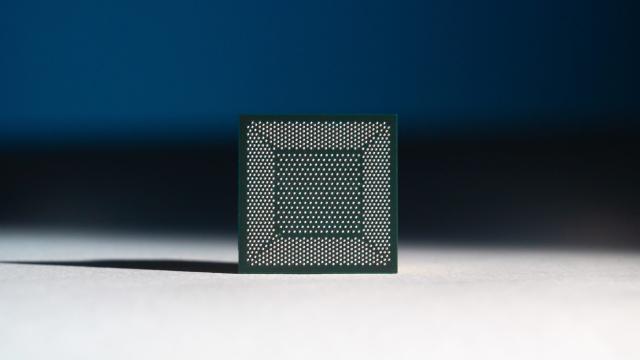Loihi, a neuromorphic research chip developed by Intel, has learned to smell, according to a recent report from PCWorld. Intel teamed up with Cornell University to train Loihi to recognise the scent of 10 potentially hazardous chemicals, like acetone, ammonia, and methane. This artificial nose seems to be closer in function to a dog’s nose, or those handheld detectors you might have seen the Department of Homeland Security use at an airport to ‘smell’ traces of explosive materials. But Loihi works a little differently.
Instead of trying to detect the chemicals themselves, Intel and Cornell were modelling what happens in the human brain when it detects a smell, with the help of 72 chemical sensors. In other words, what signals your brain generates when your olfactory cells, or the nerves in your nose, are stimulated. This could also be useful for detecting certain diseases that some scientists say have certain smells, like Parkinson’s. There have been studies on dogs’ ability to detect cancer, so maybe, with more research, Loidi could eventually do the same, too.
Intel claims that Loihi can also detect these 10 chemicals even with the presence of “noisy data,” or a large amount of meaningless information. So let’s say Loihi is trying to sniff out a specific chemical in a large space, like an airport filled with smells of perfume, coffee, food, and dirty luggage. It could gather data on all that as well, but because since those smells are meaningless data, it can easily ignore all that, according to the company. Noisy data can also mean corrupt data or data that a system can’t understand or interpret correctly. A lot of dogs could be out of a job in several generations.
Intel developed the Loihi chip back in 2017 with the goal of making it emulate the human brain. Seems like it’s well on its way to doing just that. But Intel isn’t the only one currently researching neuromorphic computing, which is a specific area of artificial intelligence (AI). Neuromorphic computing is also being investigated by IBM, HPE, MIT, Purdue, Stanford, and others.
Intel is also looking to use its “Pohoiki Springs” network, which is built from 768 of its Loihi neuromorphic chips, in a number of different applications, one of which could be to help combat covid-19. In a statement, Intel said that while Pohoiki Springs won’t replace every-day computing systems, “they provide a tool for researchers to develop and characterise new neuro-inspired algorithms for real-time processing, problem solving, adaptation and learning.” Pohoiki Springs is capable of producing different scenarios about how covid-19 might continue to spread, which could help scientists learn how to best slow it down or stop it altogether.
